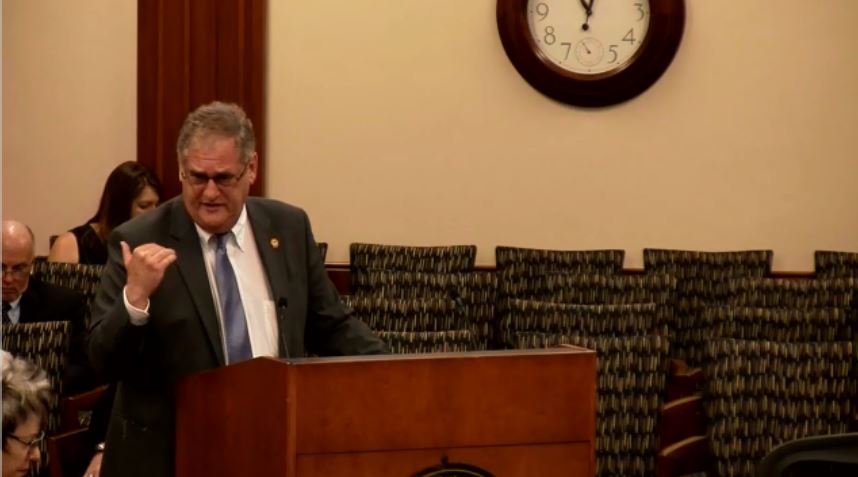You have /5 articles left.
Sign up for a free account or log in.
Two key developments this week have the potential to give momentum to the Pennsylvania State System of Higher Education’s much-watched redesign effort.
But it remains to be seen if the system will have enough time to escape a tightening financial vise in a state where competition is fierce for a diminished pool of college-aged students. Also yet to be seen is whether leaders can maintain the buy-in needed to lock in major cultural and structural changes they believe are necessary.
Wednesday, the system’s Board of Governors froze tuition for the upcoming academic year for the first time since 1998-99. It followed that action Thursday with a move that’s likely to draw less attention from students but could feel more important to faculty members -- beginning a process to create a systemwide faculty senate or faculty advisory council.
PASSHE is “missing out” by not having a systemwide shared faculty governance structure, said the chair of the Board of Governors, Cynthia D. Shapira, during Thursday’s board meeting.
More on PASSHE
Inside Higher Ed has just published
an in-depth report on regional public
colleges, which includes a section
on the Pennsylvania system and much
more. Find out more here.
“We’re missing out on getting real, direct advice on consultation from the people we are entrusting at the most basic level, at the most grass-roots level, to carry out our mission,” she said.
In a vacuum, neither change is necessarily groundbreaking. While a tuition freeze is virtually unheard-of across the state system’s 14 universities, it’s also only a one-year show of good faith that leaders hope will reassure the lawmakers who control Pennsylvania’s purse strings. And the action to set up some sort of systemwide faculty governance came as a request from Shapira to have a commission study the idea and report back by May 1.
However, in a state system that has been trying to emphasize culture change and accountability, the developments could prove to be key early decisions. The idea of systemwide shared governance is of particular importance from a structural standpoint, according to Dan Greenstein, PASSHE's chancellor.
“We’re moving in the direction of this system redesign, where we’re looking at how we enable students at any one of our 14 universities to have access to programs and courses at any of the other 13 universities,” Greenstein said in an interview. “And of course, that gets you into all sorts of interesting conversations around shared academic programming, student portability, credit mobility. And those are typically the kinds of conversations you need to have with academic faculty, because that’s right in the heart of what academic faculty do.”
No vehicle has existed at the statewide level for those conversations, Greenstein added.
Pennsylvania does have a strong statewide union for faculty members, the Association of Pennsylvania State College and University Faculties, or APSCUF. It has traditionally served in a consultative statewide role in the absence of a faculty senate or advisory council, Shapira said. It could continue to do so, at least in part, going forward.
But the board chair wants the new shared governance body to be stakeholders in a different kind of conversation outside the sometimes-combative labor-and-management focus that comes with the union relationship.
The faculty governance idea could turn into a source of tension with the union if it’s seen as undercutting APSCUF’s traditional position in any way. Any tension would come at a critical time, as the union’s collective bargaining agreement expired at the beginning of July and leaders are currently working to negotiate a new contract.

“I know where the faculty are,” Mash said in an interview. “I know that the faculty know that we are their organization and we are their voice.”
APSCUF’s roots are as a professional organization, Mash said. It has always expressed ideas and concerns about every aspect of the system and its universities, including academics.
If Mash had his way, APSCUF would continue to fill the systemwide shared governance role that PASSHE leaders are emphasizing. Still, he declined to fault Thursday’s move to create a new systemwide shared governance structure, saying he hopes the specifics turn out to be in everyone’s best interest.
“Everything they’ve been doing looks to be of great intention,” Mash said. “It’s just the devil is in the details.”
The union president struck a similar tone on the topic of the one-year tuition freeze. He called it a gambit.
PASSHE may need such a calculated risk to prove to lawmakers that it is serious about halting steady increases in tuition in hopes of securing more state funding. The system can’t continue with today’s low levels of state funding, Mash said. Only 27 percent of funding per full-time-equivalent student at public institutions in Pennsylvania comes from state support, with the rest coming from net tuition revenue, according to data from the State Higher Education Executive Officers association that covers multiple institutions and systems.
“You can’t maintain it,” Mash said. “It’s not doable.”
The tuition freeze nonetheless leaves the system facing a $62.7 million budget gap. That’s after state lawmakers increased funding for the system by 2 percent this year. They appropriated $477 million, $29 million less than system leaders had requested.
A tuition freeze will be felt by those working on university campuses, Mash said, addressing the board Thursday.
“The pain really is felt much more by those people who have to work directly with students every single day,” he said. “They are the ones who are going to witness major cuts to their departmental budgets. We’re going to see internships and other experiences cut, like they’ve been cut before.”
Over all, Mash thinks it’s the right move to hold the line on tuition. The system has been in the same pattern for long enough, he said.
PASSHE leaders are hoping for a one-time investment from the state in educational and operational infrastructure, recurring funding, and legislative changes to ease regulations in areas like purchasing. They hope the tuition freeze and other changes designed to make their governance more transparent, improve student success, find operating efficiencies, attract new students and find new revenue sources can help to sway lawmakers.
Powerful legislators have been skeptical of the system in the past. The chair of the state House Appropriations Committee earlier this year said lawmakers had lost faith in the system and that it hasn’t lived up to its mission of educating students from poor and middle-class families.
PASSHE's Problems
Leaders across the state have expressed concern that enrollment has dropped across PASSHE’s 14 institutions among students from low- and middle-income families. The system includes regional public institutions but not state-related research universities like Pennsylvania State University or the University of Pittsburgh.
The system redesign dates to a comprehensive review in 2016-17. Merging or closing some of the system’s institutions, which are scattered unevenly across the state, has been the source of much discussion over the years. One consulting group warned against mergers, closures or spin-offs, while another recommended them.
System leaders have rejected the idea of closing or merging institutions. Instead, they’ve pursued the redesign process with the goal of improving the system’s completion, job placement and social mobility metrics, as well as its affordability and the alignment between degree offerings and work-force openings.
Greenstein’s hiring, in 2018, came after the process had already begun. He’s thrown himself into the effort, preaching culture change and pushing for a detailed redesign framework. Still, polling of about 900 faculty, staff and students has shown that just 39 percent perceived their universities as being able to change.
While this week’s changes are early developments in the redesign process, they aren’t the very first to be approved.
In April, the system approved a new policy that for the first time will allow individual universities to set their own multiyear tuition strategies. It goes into effect next year, although the strategies will still be subject to approval from the Board of Governors.




